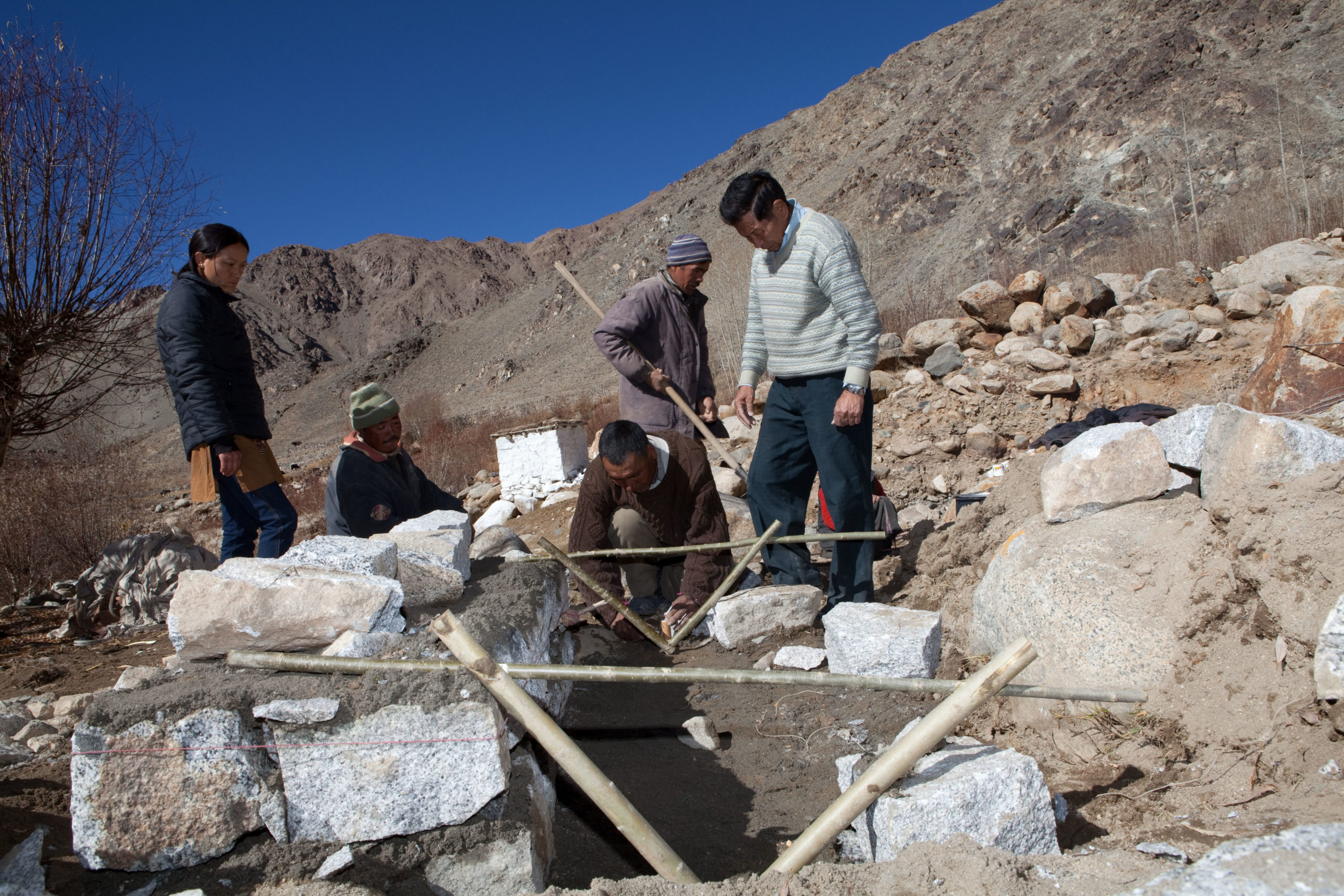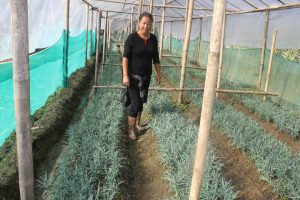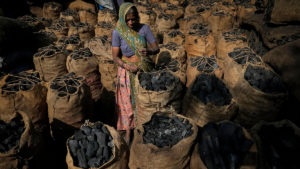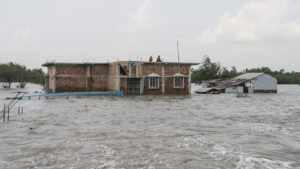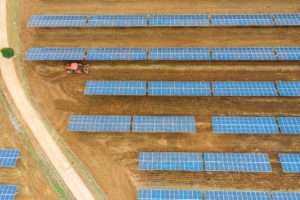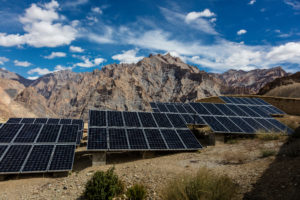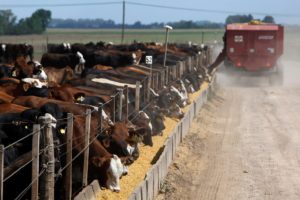In the past three years there has been an unprecedented interest in the adaptation side of the climate change story. And this interest has not been just on paper: real life adaptation efforts are emerging all over the world. They vary in scale, purpose and effectiveness, but the most successful have one thing in common: communities are at the helm.
Towns and cities in Canada and France hit by sudden heatwaves are hastily repurposing public buildings, cranking up the air conditioning and declaring them ‘cool rooms’ for their stricken citizens.
Coastal communities from west Wales and Miami to the Netherlands and Bangladesh are pondering whether to retreat from the shoreline or build ever higher sea walls.
Winegrowers in Europe are either migrating to more favourable latitudes, or staying put and switching to grapes that cope better with the climatic changes they are experiencing. Farmers in the Himalayas are adopting agroforestry methods and devising strategies to manage water supply as monsoon rainfall becomes more erratic.
Ignoring the impacts is not an option
Communities around the globe are increasingly being impacted by climate change. But they are refusing to take climate change on the chin. Their adaptation strategies are often carefully planned; they minimise their carbon and ecological footprints, align with local and global social justice imperatives, and are flexible enough in their design and implementation to cope with extreme (+ 3 degrees Celsius) excessive (+2C) and moderate (+1C) levels of global warming.
In other instances, however, adaptations are instinctive or self-centred; they can become ‘maladaptative’, meaning they increase people’s vulnerability to climate change impacts rather than easing it, or simply fall apart. Some, such as the fossil fuel-powered air-conditioned pavements of Doha, contribute to climate change while adapting to it.
The biggest problems arise when adaptation strategies exacerbate or redistribute existing inequalities and vulnerabilities. There are countless examples of this happening, as Lisa Schipper, an Environmental Social Science Research Fellow at the University of Oxford, recounts for Carbon Brief. There are agricultural modernisation projects on the west African island state of São Tomé and Príncipe that favour land owners and worsen conditions for the landless. In Vanuatu, adaptation projects have deepened inequality and led to conflict and unrest. In Vietnam, hydroelectric and forest protection plans have made upstream communities more, not less, vulnerable to the impacts of climate change.
Any adaptation measure is a response to the writing on the wall: temperatures are increasing, the weather is changing, and the prospects of keeping warming within a 2C ceiling look slim. Failure to prepare for and adapt to what is coming is as foolish as the failure to mitigate has been. Examples of great (and not so great) adaptations are going to multiply in the coming decades. We are still very much in the pioneer stage.
Climate adaptation diplomacy
Against this backdrop comes the Adaptation Action Coalition (AAC), launched in early 2021 “to accelerate global action on adaption [sic] to achieve a climate resilient world by 2030”. So far, the coalition has 38 member countries including Bhutan, Nepal, India and founder member Bangladesh. As an initiator of the coalition, the UK is presumably hoping to use its COP26 presidency to recruit more countries at the Glasgow summit. They are going to need to; 2030 is a blink of an eye away and the creation of a “climate-resilient world” is an incredibly lofty aim.
The AAC has organised itself around 12 “action-orientated workstreams”, ranging from water and health to infrastructure, finance, jobs and more, as laid out in the 2021 Climate Adaptation Summit paper ‘Delivering and Adaptation Action Agenda’.
Adaptation, it seems, is finally coming out of the shadow of mitigation at the UN negotiations
While it is easy to scoff at seemingly unrealistic initiatives like these, adaptation, it seems, is finally coming out of the shadow of mitigation at the UN negotiations. It will be more prominent in the deliberations at COP26 than ever before. Countries in the Global South will be able to point at the AAC’s workstreams and the magnitude of work needed under each one as they make their case for climate finance and funding.
Broken promises
There has been a lot of talk and justified hand wringing about the failure of wealthy nations to stump up the long-promised USD 100 billion a year of climate finance for action on mitigation and adaptation. The new “climate finance delivery plan” signals a renewed commitment to honour the promise, but not until 2023 at the earliest, three years later than originally planned. As ever, the commitment is non-binding. This delay has been met with dismay across developing countries and the climate justice movement, and threatens to further destabilise trust in the COP process.
What is needed is an increased commitment, not least to help plug the gap between how much money is needed for adaptation projects compared with how much is currently being made available. But what is most important, and what might attract more countries to join the AAC, is a re-prioritisation of how climate finance and funding is allocated. That is what delegates from the Global South, at least those who are able to make it to Glasgow, will be calling for at COP26.
It is difficult to calculate precise figures for the amount of climate finance that materialised in 2020, but it is known to have fallen short of USD 100 billion and is thought to be around USD 80 billion. Of that, 80% is estimated to have gone towards the funding of mitigation projects in wealthy nations, leaving just 20% (USD 16 billion) for the Global South to spend on mitigation and adaptation projects.
This is clearly not enough, especially as less than 10% of that USD 16 billion is being directed towards the world’s most vulnerable communities to meet their adaptation needs.
According to the UN’s latest ‘Adaptation Gap’ report, “Annual adaptation costs in developing countries alone are estimated at USD 70 billion currently. This figure is expected to reach USD 140-300 billion in 2030, and USD 280-500 billion in 2050.”
To get anywhere close, the USD 100 billion commitment needs to be increased, and it needs to be split evenly between adaptation and mitigation. Until now, this has not looked likely to happen, but with the growing public and political interest in adaptation, the balance may improve at COP26. If it does not, the Adaptation Action Coalition is going to fail spectacularly.
